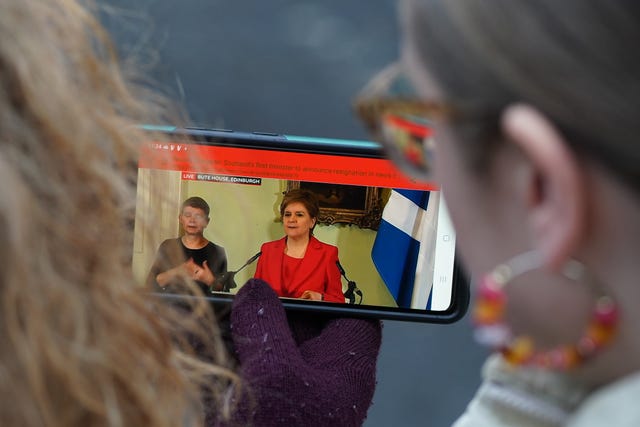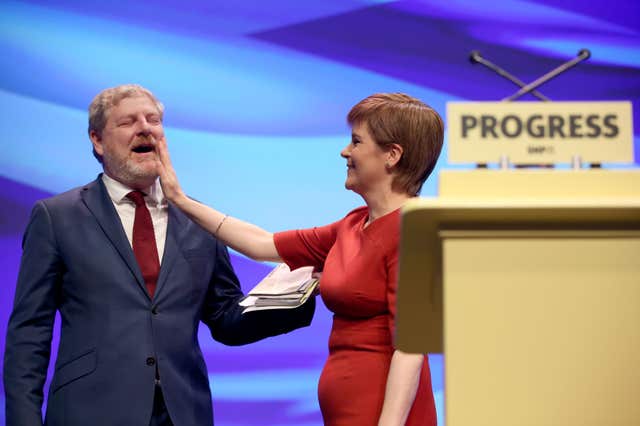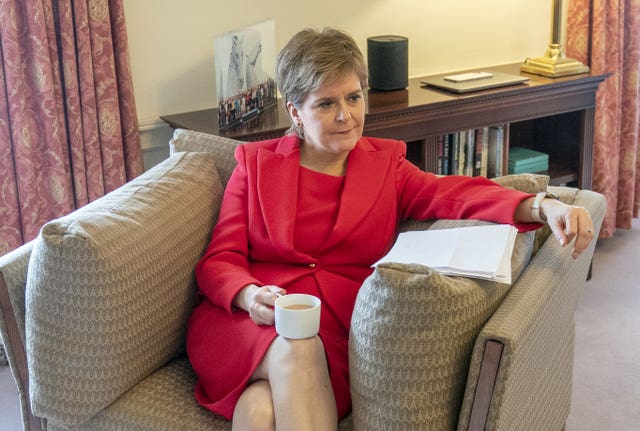Scotland’s First Minister Nicola Sturgeon announced on Wednesday she will stand down from a role she has held longer than any other.
Ms Sturgeon said the impacts of guiding the country through the Covid-19 pandemic paired with eight years in the job had taken its toll mentally and physically.
She will stay on until her successor as SNP leader has been elected, but what does that mean for the party, the Government and the country?
– What happened?
The Scottish Government sent a note to journalists at 9.14am on Wednesday, announcing a press conference at 11am, with no reason given as to why it was being held.
Just before 10am, the BBC reported the First Minister planned to stand down, sending shockwaves through the UK’s political landscape.
At the press conference, the First Minister said serving had been the “privilege of my life”, but said leaving now was “right for me, for my party and for the country”.
– Why did she stand down?

Ms Sturgeon was keen to emphasise that the impact of recent pressures – namely reforms to gender recognition and the blocking of the UK Government; the handling of transgender prisoners; and a ruling by the UK Supreme Court that Holyrood could not hold a referendum on independence – had not impacted on her decision.
The First Minister said she had been “wrestling” with the decision “for some weeks” and had reached the conclusion that it was not right for either her personally, or the country, to carry on in the job.
She opined about the lack of privacy she enjoyed as First Minister, and how “ordinary stuff that most people take for granted, like going for a coffee with friends or for a walk on your own becomes very difficult”.
She also pointed to her party’s special conference next month, where it will decide the next steps for its push towards independence.
The First Minister said she did not want to ask SNP members to opt for using the next UK election as a de facto referendum on independence, if she was not the leader who would fight that election.
Ms Sturgeon also pointed to the impact of the Covid-19 pandemic as a key reason, saying “the weight of the responsibility was immense”, adding: “It’s only very recently, I think, that I’ve started to comprehend, let alone process, the physical and mental impact of it on me.”
– What next for the country?
In the immediate term, nothing will change. The First Minister will remain in office until the SNP selects a new leader.
After that decision is made, whomever is elected will be tasked with forming a government.
❤️ Thank you @NicolaSturgeon.#ThankYouNicola pic.twitter.com/MCVVCnKsI6
— The SNP (@theSNP) February 15, 2023
– What next for the SNP?
There doesn’t appear to be an obvious successor in the way Nicola Sturgeon was for Alex Salmond, so the party faces a potentially bloody leadership race as the runners and riders target the top job.
A small faction within the party has been critical of the First Minister’s approach to independence and more recently the Government’s push for gender reforms.
A candidate from this group could bring greater exposure to fissures already felt, albeit they would be unlikely to carry the support of enough members to become party leader.
In the long term, the party will be worried about electoral success. Ms Sturgeon leaves office as the most popular politician in the UK according to recent polls and with the SNP flying high but a change at the top, paired with a resurgent Labour Party, could hurt them at the ballot box.
– Who is likely to take over?
With just hours having passed since the announcement, there have, of course, been no announcements of potential candidates for the job.
Bookmaker William Hill ranks Constitution Secretary Angus Robertson as first-placed in the race to succeed the First Minister.

Mr Robertson, a former MP who led the party at Westminster, is among one of the most powerful people in the party and would certainly be considered a possibility for the top if he took the decision to run.
Finance Secretary Kate Forbes is another mentioned as a potential successor and is due back from maternity leave in the coming weeks.
Ms Forbes has been a rising star within the party since being thrust into the limelight to deliver the budget in 2020 after her predecessor Derek Mackay resigned in disgrace.
But, the Finance Secretary is believed to be at odds with the party position over a number of social issues, including the push for gender reforms – a vote she missed while on maternity leave.
Health Secretary Humza Yousaf may also take a run at the leadership, having long been considered a possibility, although the controversial passage of the Hate Crime and Public Order (Scotland) Act when he was Justice Secretary and the ongoing crisis in the NHS while he has been Health Secretary could dent his chances.

– When will we know?
The short answer is: We do not know. The details of the leadership race will be decided by the SNP’s national executive committee and have not yet been announced.
The SNP have not run a leadership contest for almost two decades, with Alex Salmond – and his deputy Nicola Sturgeon – taking power in 2004.
– What next for Nicola Sturgeon?
The First Minister will continue on from the backbenches, at least until the 2026 Holyrood election.
She said to journalists after her announcement on Wednesday she planned to continue to campaign on criminal justice reforms; improving the experience of young people in care; and Scottish independence.
Ms Sturgeon also told Vogue magazine in 2021 she would consider becoming a foster parent when her time in office was over.




Comments: Our rules
We want our comments to be a lively and valuable part of our community - a place where readers can debate and engage with the most important local issues. The ability to comment on our stories is a privilege, not a right, however, and that privilege may be withdrawn if it is abused or misused.
Please report any comments that break our rules.
Read the rules hereLast Updated:
Report this comment Cancel